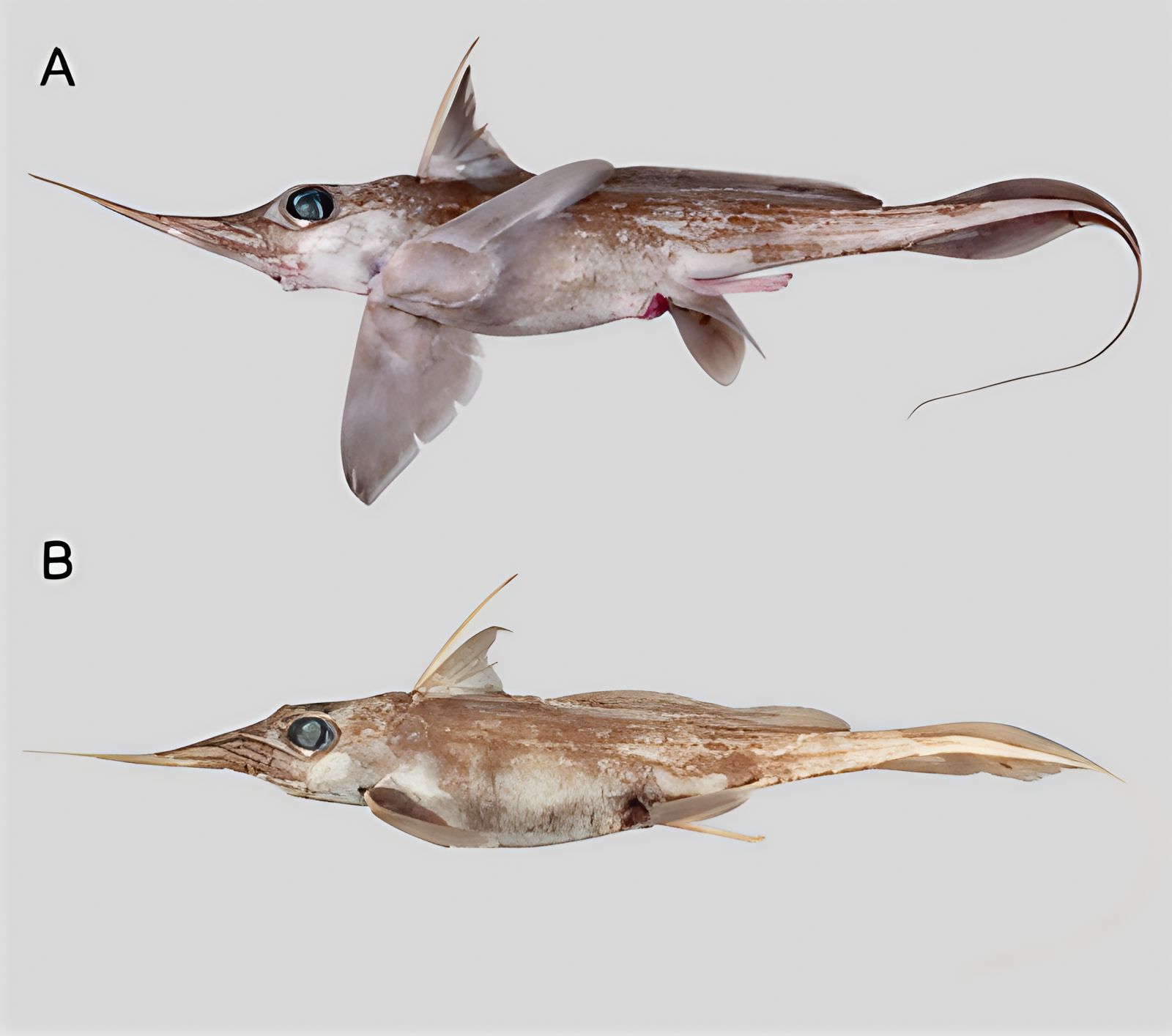A new species of shark discovered in the abyss
Published by Cédric,
Article author: Cédric DEPOND
Source: Environment Biology of Fishes
Other Languages: FR, DE, ES, PT
Article author: Cédric DEPOND
Source: Environment Biology of Fishes
Other Languages: FR, DE, ES, PT
Follow us on Google News (click on ☆)
This rare specimen, classified among the chimaeras, was identified off the coast of New Zealand. These cartilaginous fish live in extreme conditions, at depths of more than 8,530 feet (2,600 meters).

Researchers from the National Institute of Water and Atmospheric Research (Niwa), based in New Zealand, led this in-depth study. The specimen they identified, named Harriotta avia, revealed unique morphological and genetic characteristics that clearly distinguish it from previously recorded relatives.
Scientific surveys conducted in the Chatham Rise region, a vast underwater area south of New Zealand, allowed researchers to collect several specimens of this species. This region, known for its largely unexplored marine fauna, serves as a prime research area for discovering new species. The individuals collected remain challenging to observe due to the great depths at which they live.
The Harriotta avia exhibits several striking physical features that set it apart from other species of the same genus. Its long, narrow snout gives it a distinctive appearance, while its chocolate-brown skin provides effective camouflage in the dark depths where it resides. Its large pectoral fins, particularly well-developed, allow it to move gracefully through the deep ocean currents.
These unique morphological traits, combined with significant genetic variations, allowed researchers to confirm that this is an as-yet-unknown species, marking a new step in the classification of chimaeras.
Brit Finucci, the lead researcher of this team, named the fish in honor of her grandmother. She emphasizes that these chimaeras are ancient ancestors in the evolution of modern fish. The discovery of these creatures raises important questions about the biodiversity of the abyss. Their study could provide insights into the resilience of marine ecosystems in the face of environmental threats.
What is a marine chimaera?
Chimaeras are cartilaginous fish related to sharks and rays. Their skeleton is entirely made of cartilage. These creatures live in the deep oceans, often thousands of feet below the surface, making them difficult to study.
Chimaeras are distinguished by their unusual morphologies: an elongated snout, imposing fins, and often very large, dark eyes. Unlike common sharks, they do not have sharp teeth but rather dental plates adapted for crushing prey such as mollusks and crustaceans. They are sometimes nicknamed "ghost sharks" due to their appearance and mysterious habitat.